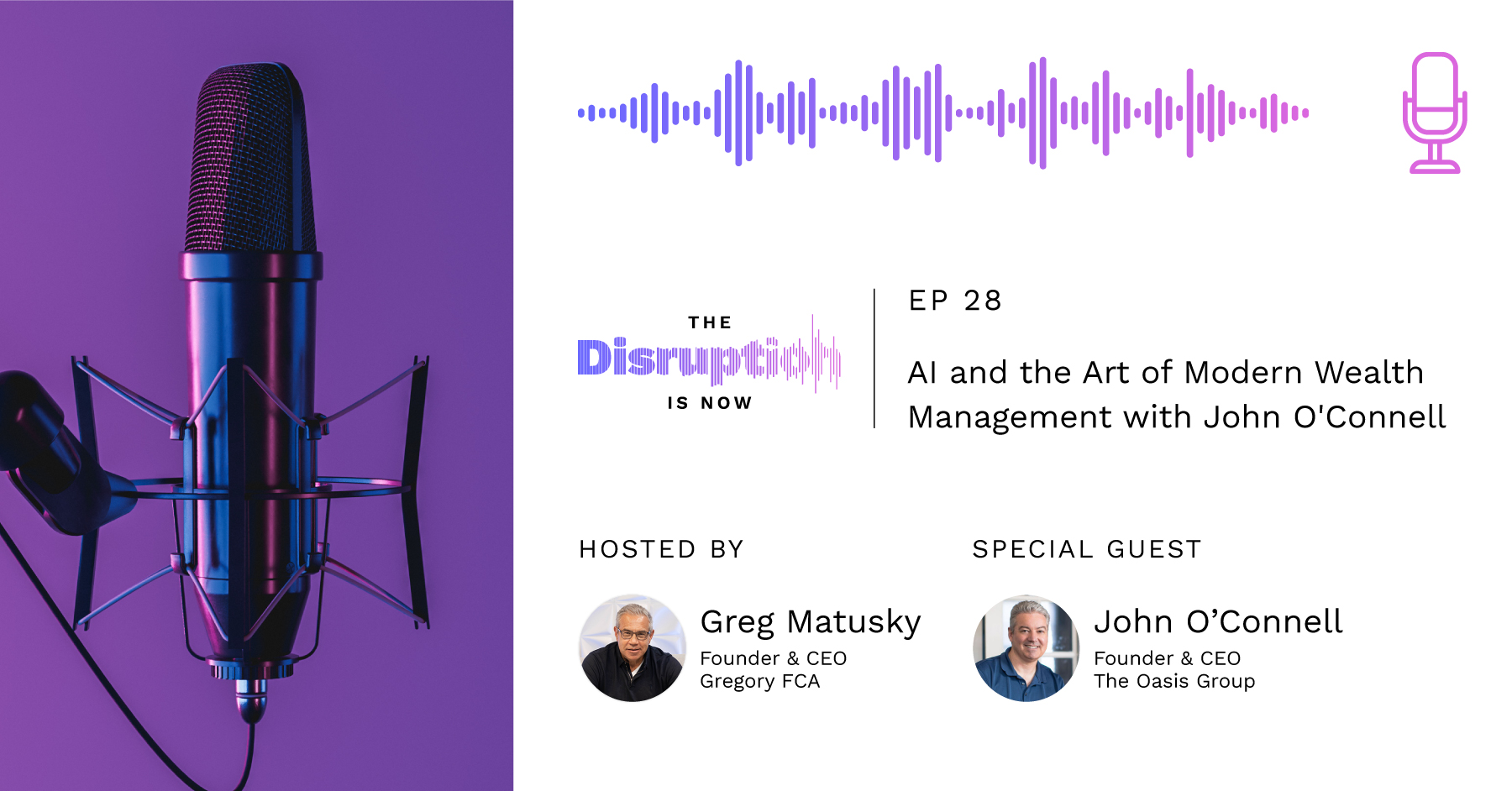Financial services may not seem like an industry ripe for AI disruption considering the regulations and sensitive customer data at play. John O’Connell, Founder and CEO of The Oasis Group, however, sees plenty of opportunity.
O’Connell’s firm brings technology to wealth managers, and he sees only two types of firms left in five years: those that harness AI as a force multiplier … and those looking to sell their business.
On this episode of The Disruption Is Now, O’Connell and host Greg Matusky discuss some of AI’s history and where the technology is headed for financial services firms. From developing prompt engineering techniques to offloading grunt work, O’Connell outlines how firms should be thinking about AI.
Listen in to learn how AI is already transforming the financial services landscape and why custom AI models can unlock benefits across business development, customer service, and more.
Watch now:
Key takeaways
Prompt engineering is a critical skill
Getting desired outputs from AI models like ChatGPT isn’t purely about the model — the prompt has a big impact on the results. Crafting effective prompts requires understanding the specific model used and iterating to refine the prompts.
The goal is to frame inputs in a way that properly triggers the model to generate well-structured and substantive outputs. By developing prompt engineering skills through practice and experimentation, you can get better value from AI.
Custom financial services LLMs will gain traction
In addition to generalized large language models (LLMs) like GPT-4, O’Connell foresees the emergence of more specialized models tailored to specific companies. These models will train on domain-specific data, including proprietary financial advice, and are safer from a cybersecurity standpoint because they are separate from the rest of the AI world.
O’Connell provides the example of a “wealth management copilot” trained on financial terminology, portfolio management concepts, and client segmentation data to provide nuanced investment-related outputs specific to the company using the AI model. He envisions using generative AI to summarize client conversations and provide personalized AI-assisted experiences during customer service interactions. Perhaps most powerfully, O’Connell emphasizes leveraging AI to mine client data and automate the identification of cross-selling opportunities, concentration risk, and market differentiators.
‘Anything that’s not creative should be systematized and delegated’
That’s the saying on O’Connell’s whiteboard. It never gets erased because it’s one of the core values he operates by. Any repetitive or non-creative task should be viewed as an opportunity for delegation and automation using tools like AI.
Organizations should audit their operations with a critical eye toward the activities that can be handed off to AI systems. Those that do will be able to better leverage their human talent. O’Connell thinks this ultimately boosts both productivity and job satisfaction by enabling people to work at the highest levels of their creative potential.
Key moments:
● John’s background and career arc (1:55)
● Discussing AI winters and an early history of AI (3:30)
● Rise of specialized “copilots” (10:35)
● GPTs as a starting point, not a full solution (14:43)
● The importance of prompt engineering (20:40)
● “Anything that’s not creative should be systematized and delegated” (37:20)
● Two types of firms left in five years (43:35)

